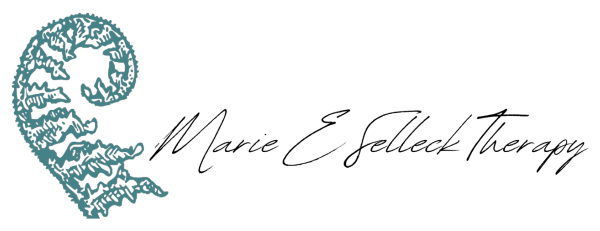Hidden Anxiety: Recognizing Less Common Signs of Anxiety Disorders
Most people associate anxiety symptoms with obvious signs like racing heartbeat, racing thoughts, excessive worrying, and panic attacks. But anxiety disorders can wear many masks, hiding in plain sight while impacting our lives in subtle ways. As a therapist specializing in anxiety treatment, I've observed that many people suffer silently because they don't recognize their symptoms as anxiety.
Beyond the Common Signs of Anxiety Disorders
We're trained to spot the classic signs of generalized anxiety disorder: the pounding heart, the sweaty palms, the overwhelming sense of dread. But what about the less obvious signs?
Physical Symptoms That Surprise
Anxiety disorders aren't just mental—they're physical too. Your body reacts to anxiety in ways you might not connect to your mental state. This is because anxiety is an increase in stress on the body and this means an increase in cortisol (stress hormone) and in turn, and increase in inflammation, physical pain, and tightness.
Digestive issues: That upset stomach, frequent trips to the bathroom, or sudden food intolerances might not be just a dietary problem but a sign of anxiety symptoms.
Muscle tension: Sore jaws from clenching teeth, tight shoulders, or back pain can be your body's response to ongoing stress and anxiety triggers.
Skin problems: Unexplained rashes, hives, or worsening of conditions like eczema often flare up during periods of high anxiety.
Headaches: Those persistent tension headaches or migraines that seem to come out of nowhere may actually be linked to anxiety. Many people don't realize that anxiety causes the muscles in your head, neck, and shoulders to tighten, leading to painful headaches. Even more surprising is that these headaches might be your only noticeable symptom of anxiety during periods of chronic stress.
Restlessness: That inability to sit still or relax is often dismissed as personality or excess energy, but it's a common physical manifestation of anxiety. You might notice you're always fidgeting, pacing, or feeling an inner sense of being wound up tight. This constant motor activity—tapping feet, drumming fingers, or needing to move frequently—is your body's way of discharging excess energy produced by your anxiety response. Many don't connect this physical restlessness with their mental state, instead attributing it to caffeine or just being "high-strung" rather than a symptom of anxiety.
Behavioral Changes You Might Miss
Some behaviors that seem like personality traits or habits may actually be signs of anxiety in disguise:
Procrastination: Putting things off isn't always laziness. It's often fear of failure or perfectionism—both linked to anxiety disorders and might benefit from anxiety management techniques.
Difficulty making simple decisions: When choosing what to eat for lunch becomes overwhelming, an underlying anxiety disorder might be at play.
Overplanning and controlling: The need to plan every detail or control situations can stem from trying to manage chronic anxiety.
Cognitive Signs That Fly Under the Radar
Anxiety affects how we think, often in ways we don't recognize without proper anxiety education:
Negative self-talk: The critical voice in your head that's always pointing out flaws.
Black-and-white thinking: Seeing situations as all good or all bad with no middle ground is a common anxiety pattern.
Mind-reading: Assuming you know what others think about you (and it's usually negative).
Catastrophising: Only seeing the worst possible outcome in every situation
Why These Signs Get Missed
These symptoms of anxiety get overlooked for several reasons. Society praises some of them—like perfectionism or being extremely prepared. Others get misdiagnosed as physical health problems and are only symptoms managed instead of resolved from the root causes. And many people have lived with these patterns for so long they see them as normal rather than signs of an underlying problem.
Breaking the Cycle with Anxiety Therapy
Recognizing these hidden signs is the first step toward healing. Here's what you can do for effective relief:
Pay attention to patterns: Notice when certain behaviors or physical symptoms appear. What’s going on around you and/or in the last week? This awareness is the foundation of anxiety management.
Question your thinking: When you catch yourself in negative thought patterns, ask: "Is this really true, or is anxiety coloring my view?"
Be compassionate with yourself: These hidden anxiety symptoms developed as ways to protect yourself. They served a purpose, even if they're no longer helpful.
Seek professional anxiety therapy: A therapist specializing in anxiety, I can help you identify these patterns and develop healthier coping strategies.
Moving Forward with Anxiety Management
Understanding the less obvious signs of anxiety can be life-changing. Many clients tell me they felt relief just putting a name to what they've experienced for years as simply unsolvable physical problems. Knowledge is power—it helps us move from feeling controlled by mysterious symptoms to understanding what's happening and taking steps to address it through proper anxiety therapy. Like what is offered by Marie E Selleck Therapy in Grand Rapids, MI and online in Michigan, Florida, and Arizona.
Anxiety doesn't have to be dramatic to be real. The quiet, persistent kinds of anxiety can affect your quality of life just as much as the more obvious forms. By recognizing these hidden signs, you open the door to healing and developing a healthier relationship with yourself through effective anxiety treatment.
Remember: You're not broken, and you're not alone. These experiences are common parts of being human, and with awareness and support, you can learn to manage them effectively with the right anxiety help.


